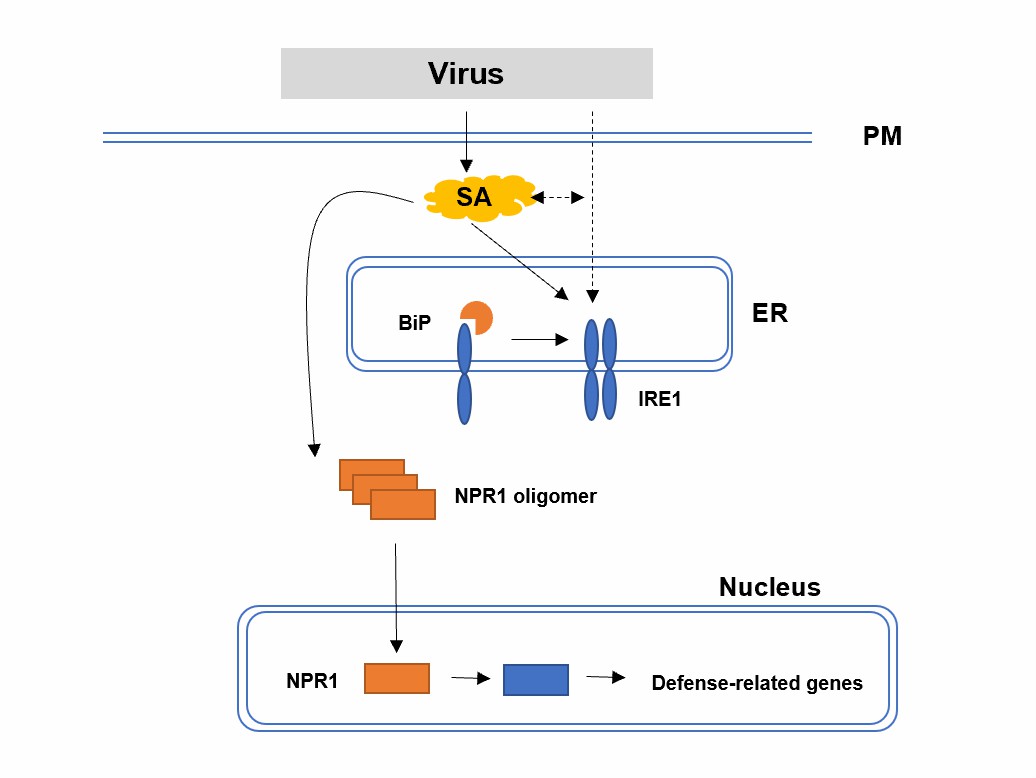Role of Plant Endoplasmic Reticulum in Biotic Stress
As sessile organisms, plants rely on their interactions with various organisms to adapt to environmental changes. Most land plants establish symbiotic relationships with microorganisms such as fungi and bacteria, which protect plants from various pathogens. Endoplasmic reticulum (ER) is a central organelle that regulates the cellular stress response in plants and animals, sensing and responding to biotic stresses. Plants have evolved many strategies to reduce ER stress, including the unfolded protein response (UPR), ER-associated degradation (ERAD), and autophagy.
Lifeasible, as a leading global company, is committed to helping our customers achieve effective and successful research. We provide analysis of plant endoplasmic reticulum involved in biotic stress, including RNA viruses and other pathogen infections. We always deliver reliable results and reports on time to our customers worldwide.
Interactions of Plants ER with RNA Viruses
- During viral infection, overexpression of viral proteins and changes in lipid membrane structure induces ER stress and UPR signaling by disrupting protein homeostasis in plant hosts.
- Lifeasible provides services to measure the expression levels of ER stress-related genes, such as BiPs, protein disulfide isomerase, and calreticulin, to investigate the association between plant RNA virus infection and ER stress response.
 Fig.1 ER stress responses to RNA viruses in plants.
Fig.1 ER stress responses to RNA viruses in plants.
- We also provide visualization services for viral replication complexes (RCs) formation by using advanced cellular fluorescence imaging and microscopy techniques to help customers understand the viral replication process in plant cells and the host factors involved. Besides, viral RC plays an important role in enriching host cellular components for viral replication and preventing the activation of specific host defense mechanisms.
- Types of viruses we provide services for are Turnip mosaic virus (TuMV) 6K2, Potato virus X (PVX) triple gene block protein 3 (TGBp3), Rice black-streak dwarf virus P10, Garlic virus X p11, and others.
Interactions of Plants ER with Other Pathogen Infections
- Plants have evolved two immune pathways, including pathogen-associated molecular patterning (PAMP) -triggered immunity (PTI) and effector-triggered immunity (ETI), to protect them from pathogen attack.
- Several membrane-localized immune receptors or coreceptors that mediate PAMP sensing in PTI have been identified as ERAD substrates.
- We provide analysis of the following pathways, LRR-RLKs coreceptor kinases, second-line ETI of plant immunity, and proteins containing CUE domains, which recognize and degrade unfolded or misfolded immune receptors or coreceptors in response to pathogen attack in plants.
Lifeasible is always devoted to providing high-quality and satisfactory service to our customers. We provide our clients with direct access to our experts as well as promptly respond to their inquiries. If you are interested in our services or have any questions, please feel free to contact us or make an online inquiry.
For research or industrial raw materials, not for personal medical use!
 Fig.1 ER stress responses to RNA viruses in plants.
Fig.1 ER stress responses to RNA viruses in plants.